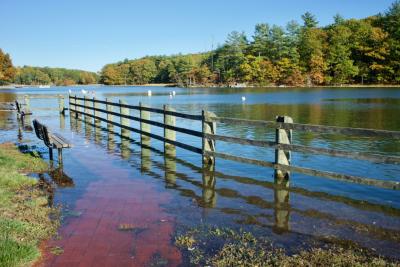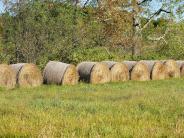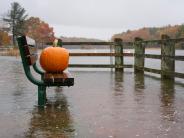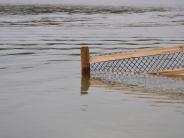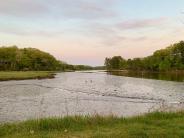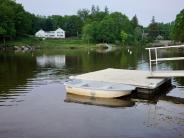-
Our Community
-
- Welcome Visitors About Durham's Community Climate Remembrance Project Diversity Welcome Statement Life in Durham Places to Stay Places to Eat Places to Park Transportation Schools Oyster River School District Welcome New Homeowners
- Durham Public Library Programs & Events Trails and Town Lands Conservation Commission Land Stewardship Conservation Lands & Parks Conservation Easements Trails Youth Organizations University of New Hampshire Durham Preservation Durham Historic Association
- Volunteer Town of Durham Land Stewardship Public Library UNH Cooperative Extension Churchill Rink Parks & Recreation Recreation Program Calendar Outdoor Recreation Activities Outdoor Recreation Sites Sustainable Durham Recycling Information Swap Shop Information Earth Day 2023
-
- Doing Business
-
Inside Town Hall
-
- Departments Assessing Building Business Office Code Enforcement Information Technology Planning Town Clerk/Tax Collector Parks & Recreation Boards, Commissions & Committees Agricultural Commission Conservation Commission Historic District/Heritage Comm. Other Boards & Committees Planning Board Zoning Board
- DCAT Media Productions DCAT Media - Programming DCAT Media Livestream Zoom Video Meeting Schedule Town Council Town Administration Public Hearings Public Safety Police Fire McGregor Memorial EMS (Ambulance)
- Public Works Engineering Division Operations Division Sanitation Division Water Division Wastewater Division Stormwater Town Directory Telephone Directory by Department Services Directory
-
-
Helpful Resources
-
- Quick Links Assessors Online Database Bids and RFP’s DCAT Media Productions GIS Digital Maps Jobs Online Services Parking Information Social Services Town Holidays Trash Pick Up Holiday Schedule Transfer Station & Recycling Center Information Curbside Refuse Collection by Street Zoom Video Meeting Schedule
- Town Documents Budget & CIP Forms & Applications Master Plan Tax Increment Finance (TIF) Districts Tax Maps Town Charter Town Code Town Reports Town Wide Master Fee Schedule Zoning Ordinance Voter Information
- Contact Us Cemetery Information Social Media Facebook Twitter Town Newsletter Friday Updates Town Meetings & Events Agenda and Minutes Calendar Public Hearing Notices State & U.S. Representatives
-
Sustainability History in Durham
Durham has been very active in becoming more sustainable over the years. Explore some of the numerous initiatives in place here in Durham on this page.
2007
- UNH student completes a greenhouse gas inventory for Durham that measures municipal and community emissions.
2012
- Durham implements a municipal construction program to replace or renovate aging public infrastructure with more stringent efficiency standards (ex: public library, police station, ongoing improvements to water and wastewater systems)
- Durham becomes the first Bee City in New England.
2013
- Durham creates a climate appendix to the Hazard Mitigation Plan.
2014
- Town Hall, a LEED Silver certified building, is completed.
2015
- Durham installed its first electric vehicle charging station at Pettee Brook municipal parking lot.
2016
- Wagon Hill Farm Living Shoreline Work begins. This restoration project was designed to reduce erosion, replace salt marsh habitat, and accommodate changes from sea level rise.
2017
- Durham updates its Climate Hazard & Mitigation Chapter of the Master Plan.
2018
- The Flood Hazard Overlay District is updated to incorporate sea level rise. This is for informational purposes so that construction in the identified areas can anticipate the likely future flood water level for the life of a building.
2019
- Durham hosts its first Sustainability Fellow through its partnership with the UNH Sustainability Institute. The project focuses on the Town’s resilience to a changing climate.
- Seacoast Remembrance Art project is completed. The project is intended to raise awareness about climate change by incorporating examples of events taking place in the future due to climate change.
2020
- Durham’s summer Sustainability Fellow completes Durham’s first Municipal Greenhouse Gas Inventory report. The report indicates that municipal emissions are generally low and recommends opportunities for reducing emissions further.
- Eversource completes the Seacoast Reliability Project in Durham. This new transmission line, connecting two existing substations, improves Durham’s critical transmission system so Durham will have reliable electric power to meet its current end future energy needs.
2021
- Durham joins the Global Covenant of Mayors, committing to reducing emissions and taking action to increase the Town’s resilience to climate change.
- Durham’s Sustainability Fellows complete Durham’s Community-Wide Greenhouse Gas Inventory report following updated protocols. This highlights Durham’s two largest sources of emissions (buildings and transportation) and highlights the role of Durham's trees in sequestering carbon (equivalent to 31.2% of emissions each year).
- Durham sets its first emission reduction targets: To reduce emissions by 35.5% below 2019 levels by 2030, and to have net-zero emissions by 2050.
- Durham completes a groundwater study to understand the potential impact of sea level rise on fresh water private wells within the community.
- Durham’s Energy Committee develops an energy checklist to encourage developers to consider energy efficiency in new or renovated buildings and sites that are being developed or subdivided.
- Durham creates a website, Sustainable Durham, to inform the community about its sustainability initiatives and ways to get involved.
- Durham purchases its first two hybrid police vehicles based on findings from the 2020 Summer Sustainability Fellow. Not only does this action reduce emissions, but it also saves the Town money over the life of the vehicle.
2022
- Durham hires a new Sustainability Fellow. Durham’s Sustainability Fellow completes Durham’s Climate Action "Mitigation" Plan following updated protocols. This plan shall act as a tool for guiding projects, identifying funding opportunities, and balancing priorities.
- Upon approval by the Town Council, the Conservation Commission reviews the plan. Climate action plans must include both mitigation and adaptation sections. They can either be submitted separately or compiled into one document. Currently, Durham is assessing risk and vulnerability through its Hazard Mitigation Plan 2022, and goals and plans for adaptation are still being developed. Currently, only the mitigation portion of the plan is reported to GCOM for the mitigation badge.
- Although Durham set a first emission reduction target of 35.5% below 2019 levels by 2030 and a net-zero emissions target by 2050. A revisit of the calculations revealed that it is possible to go beyond 35.5%. By implementing the CAP actions, it is possible to achieve 42.8% reductions in emissions.
- Durham's Hazard Mitigation Plan 2022 must comply with GCOM requirements as well as FEMA requirements.
- Durham’s Sustainably Fellow along with the Energy Committee develops an article series in support of the strategic community engagement efforts of the climate action plan that promote buy-in and participation from Durham residents and businesses, as well as communicating with various stakeholders to gather feedback about their top priorities and concerns regarding climate action.
- Durham continuously updates its website, Sustainable Durham, as well as the Friday newsletter to inform the community about its sustainability initiatives and ways to get involved.
Click any thumbnail image to view a slideshow

